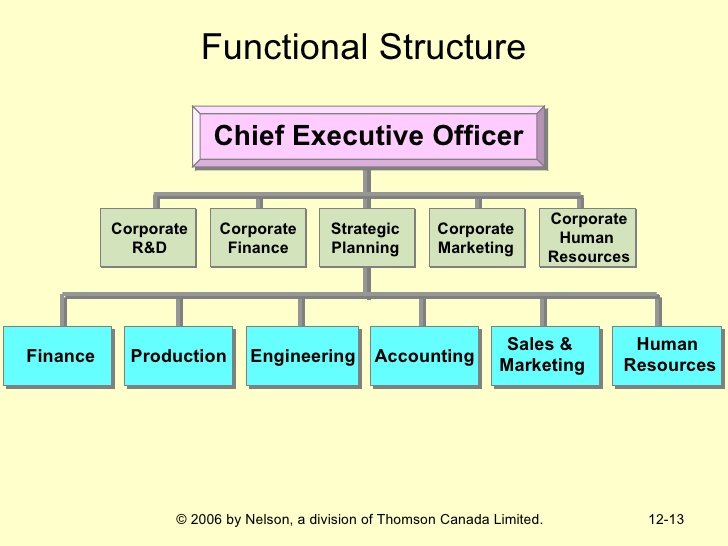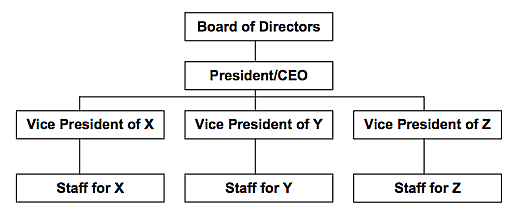
I work in a 30 Billion dollar company and I am in charge of business innovation there.
It is a huge company, with 10th of thousands of employees, countless departments, millions of emails per day, and a lot...a freaking lot of things happening everyday.
One of the major challenges a company this size deals with is called “MANAGEMENT”, and Steemit technology can revolutionlize it
1/ Introduction to Management and Hierarchy concepts
I'll start with a very brief (1 min read) introduction of these concepts.
Management can simply be translated as:
How to recognize, promote and empower the best employees.
Managing a team of 3, 10 or 300 is quite a different exercise, but the fundamentals are the same:
- figure out who is good (where good may have multiple definitions, but I will not discuss this today)
- give them challenges, test their limits
- reward the ones who deliver
- empower the best, promote them to higher positions
It takes a lot of time. Therefore, to make sure every director or manager does not have to deal with 300 people, most companies have created something we call HIERARCHY.
Hierarchy is just a way to create layers of power inside the company, and to make sure that a director or a manager does not spend 99% of his time dealing with human resources. Giving him time and more focus allows him to concentrate his energy on defining or applying the strategy of the company.
It’s pretty much like Steemit's structure:
- Whales, which would be the SVPs of the company
- Dolphins, which could be the VPs
- Bigger Minnows are the managers
- Little Minnows are the employees
And if you cut into a more detailed structure, you can create as many layers as you want based on the steem power of each category.

This is the hierarchy of Steemit. And, as many users mentioned already, each user is important and has a role in the ecosystem.
2/ Steemit "topics" are the company "directions":
Every Whale, Dolphin or Minnow has his or her specialized or preferred set of topics.
Photography, Politics, Money, Food… you name it…
If we continue the parallel with a company, each topic would represent a field, a direction
- Finance
- Marketing
- Sales
- After-Sales
- Engineering
…

Even if structure-wise, a company has a more limited amount of expertise fields than here on Steemit, in the end it’s the same logical structure.
For each topic you will find a Whale following specifically this topic, a dedicated group of Dolphins and lots of Minnows producing content.
For each Direction, you have a SVP, multiple VPs with sub-specializations, and employees that we call staff.
3/ Steemit "levels" are the company "positions":
Let’s have a look to these aforementioned positions and see in detail how they relate to a company structure:
As @dantheman mentioned here, the job of the Whales is NOT to CREATE content: most of their work should consist in CURATING content.
Curation is a game for whales and dolphins. Minnows should stick to posting and commenting
Same logic applies in a company, the job of a Financial Director is NOT to do or verify accounting. It is the job of the staff: Employees and managers are the Minnows.

1- Smaller Minnows: the employees
As @danthemnan said, their job is to CREATE content. To produce things, to write stuff. They (we) are the blue collars of Steemit, and their revenues are low. Employees do multiple things for the companies: accounting, production, sales...
These small bricks are like the blood-cells of a company: they work in numbers and are VITAL.
With experience, a specialization in a field (Politics), Employees will increase their expertise and will make them do a better job, increasing their revenues and potentially being promoted to managers.
On Steemit, specialized Minnows create better and better posts, and get more Steem Power and Steem Dollars.
2- Bigger Minnows: the Managers
One a employee becomes a manager, his revenues increase. He’s a specialized asset in the company, in charge of Marketing, Supply chain… you name it.
On steemit, the posts of this person became more precise, easier to read, providing more original content. The Minnow is often specialized in a specific type of post, or 2.
The Minnow also has a growing base of followers, generally 70% are smaller minnows and 10% are Dolphins.
This is the moment where he or she becomes to be more visible to the community, yielding more revenues.
And if the minnow stands out by the quality of his work, a Whale may promote him...
This is the upvote process.
3- Dolphins: the VPs (vice presidents)
Dolphins interact differently than Minnows. Their job is to promote the minnows by upvoting them.
By doing so, they generate massive curation rewards. Their salaries are therefore higher.
Going from the status of Dolphin to the status of Whale is like entering the board of a company.
You have a very limited amount of seats, and only a very few make it.
These few not only stand out by curating, they also sometimes post outstanding stories. Their curating work made them experts in some fields, their sharp comments and the respect earned from their position generate even more followers.
Some may even convert their Steem Dollars into Steem Power, like a Manager would buy Stocks with is bonus, becoming what we call an Associate.
Ultimately, dolphins can use their power and their followers and try to become a Whale… but this can only happen if the Whales agree on it.
4- Whales: the SVPs (senior vice presidents)
They are at the top of the company. They do not produce content, or in a very limited way.
They CURATE. Upvoting and therefore promoting dolphins and sometime some minnows…
Like the SVP’s the Whales main job is to decide WHO will become a Dolphin, and ultimately who will seat at the board of Whales.
Like the SVP’s salaries, the Whales revenues are massive and their competencies are not only impacting their respective fields:
They have the mission to make this place a long-lasting and sustainable one.
They are the warrants of the company (or Steemit) values and strategy.

4/ How Steemit mechanics can be applied to a company governance
Imagine your current company, and give to each employee an equivalent of Steem Power and Steem Dollars.
Your SVP has a lot of this power, the VPs and managers a bit less, and the employees not much.
A- Steem Power = the level of responsibility.
Let’s call it CareerPower now. And let’s imagine you have a process that consists in upvoting for your colleages work on a monthly or yearly basis. It can be comparable to selecting the employee of the month for instance.
The employees’ work is now ALSO judged by their colleagues, and therefore the good work can be noticed by directors because the minnows made it “active”.
As said, these colleagues UPVOTE the work, and like on Steemit:
- the more a colleague has power, the more his upvote counts.
- upvoting GREAT WORK also provides him benefits on his Career Power.
An outstanding realization or continuous success in multiple missions will generate more CareerPower to the creator. Upvoting for the right realizations, like a great tool on Excel or a great Study on Powerpoint, will yield curation rewards too:
- At the entry level, employees are more incentived to make good work (powerpoint, excel… ).
- At a higher level, Dolphins will curate and upvote for such content too. At their level, they will promote the realizations that go in the direction of the company governance. Giving even more power to some minnows.
- At the top, Whales will emphasis even more this selection, but they can also select an ignored realization in order to massively promote it.
B- Steem Dollars = the equivalent of the bonuses
Exactly like on Steemit, on top of the CareerPower, you have the equivalent of the SteemDollars: Pure financial recognition.
What today we call Bonuses. This is the immediate reward for the good job.
C- Climbing the corporate ladder with CareerPower.
After multiple upvote sessions, over the course of their career, some employees start to have more power, they can now become Managers, then VPs, and potentially SVPs. The same emplyees also have more bonuses, paid in $.
As you can easily understand, how long you have been working in the company also matters.
And for new entrants, depending on their former positions, they will start with a negotiated amount of CareerPower, depending on their position in the company.

5/ Conclusions:
The mechanics of Steemit, today applied to a social media and blogging Internet site, may become the foundation of a new way of managing a company.
- Allowing the promotion of the work of employees with a Blockchain structure and creating a CareerPower metric will revolutionize how employees are promoted.
- Networking will still be key, but ultimately, the quality of you work will prevail.
- On a HR (Human Resources) point of view, the Blockchain will allow a total transparency for career related decisions.
- Every employee will be able to compare himself with others, enabling a productive internal competition.
As per today, Hierarchy and Management concepts are obsolete. Steemit will optimize how we work together, bringing and organizing just the right level of #anarchy in the system.
It would not be surprising seeing companies like Facebook or Alphabet (Google) putting in place such solutions in the near future.
@sebastien
Follow me if you enjoyed.
@dragonslayer109 features authors to promote new authors and a diversity of content. ALL STEEM Dollars for this post go to the featured author
Don't just follow me, follow the author as well, if you like their post - @sebastien. Thank you
